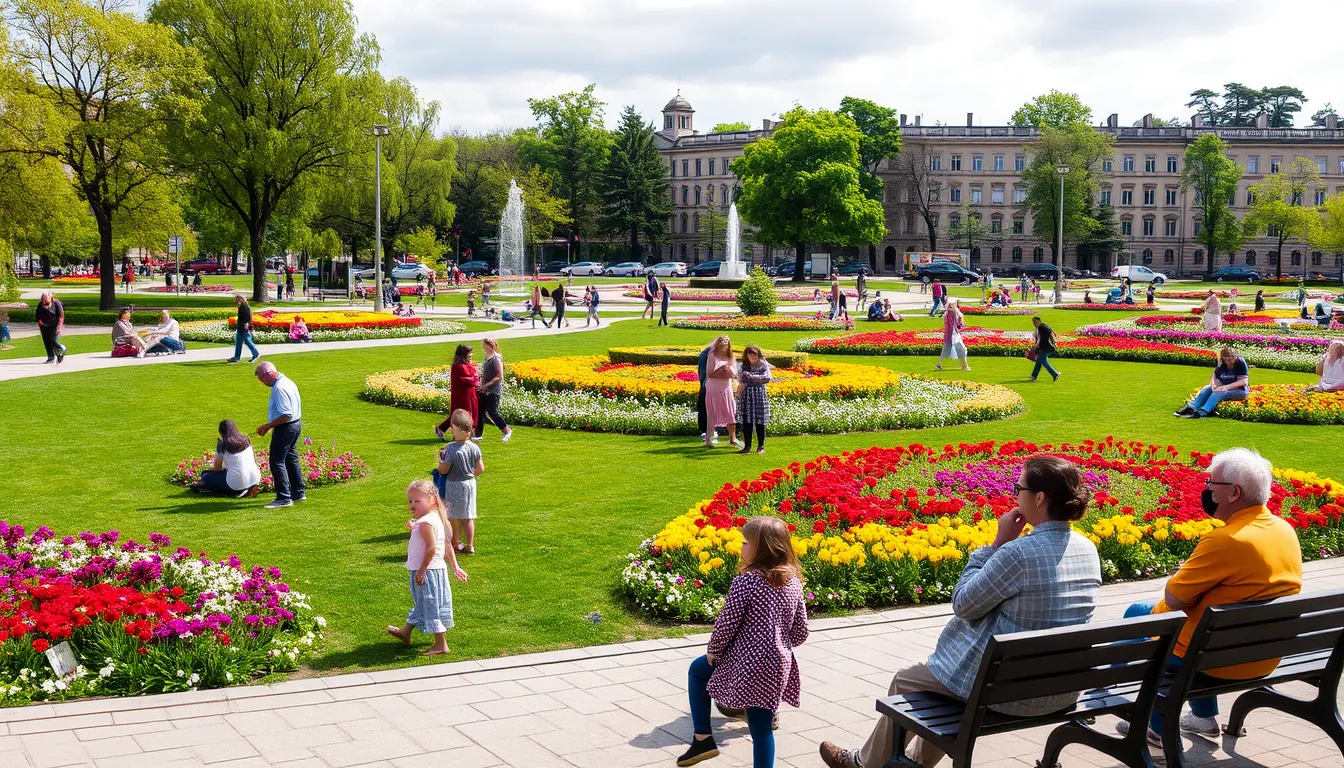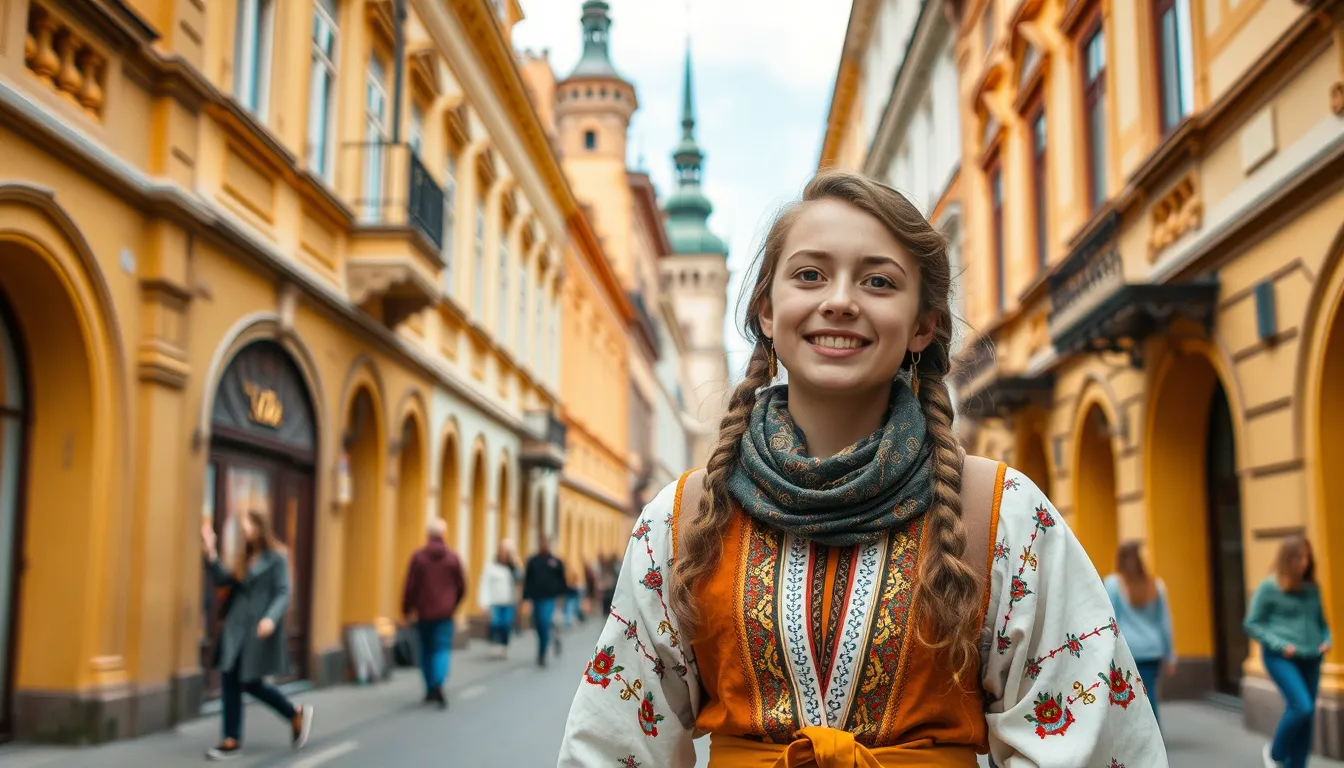Lviv, one of Ukraine’s prominent cities, boasts a population of approximately 720,000 residents as of the latest estimates. This vibrant metropolis is located in the western part of the country and serves as the administrative center of Lviv Oblast. Known for its rich cultural heritage and historical significance, Lviv is not only a hub for tourism but also a focal point for education and commerce in Ukraine.
The city’s demographics reflect a blend of traditions, with a significant influence from various historical periods, including Austro-Hungarian and Polish rule. This mosaic of heritage contributes to a unique identity that is evident in the city’s architecture, language, and cultural practices. The residents primarily speak Ukrainian, although Polish and Russian are also spoken due to the historical presence of these communities.
Lviv demographics reveal an urban environment characterized by a relatively young and educated population. The city has several universities and institutions of higher learning, which attract students from all over Ukraine and beyond. This influx of youth lends a dynamic atmosphere to the city, fostering creativity and innovation in various sectors.
In terms of urban structure, Lviv is divided into several administrative districts, each offering its own unique features and community vibes. The central district is particularly known for its bustling streets, cultural sites, and historic landmarks, making it a favorite among both locals and tourists alike.
The city’s population density varies significantly across different areas, with the central zones being more densely populated compared to the suburban regions. The demographic composition is also influenced by ongoing economic developments, technological advancements, and migration patterns both within Ukraine and from abroad.
Key Demographic Facts about Lviv:
- Current Population: Approximately 720,000
- Language: Primarily Ukrainian, with Polish and Russian in use
- Major Educational Institutions: Several universities, contributing to a large student population
- Urban Structure: Divided into various administrative districts
Lviv’s rich history and cultural diversity play a crucial role in shaping its demographic landscape. As the city continues to grow and evolve, understanding these demographics provides insight into the complexities of urban life in contemporary Ukraine.
Historical Population Trends
Throughout its storied past, the population of Lviv has undergone significant fluctuations due to various socio-political events, migrations, and economic changes. Historically, Lviv has been a melting pot of different ethnicities and cultures, influencing its demographic makeup over the centuries.
In the late 19th century, during the Austro-Hungarian rule, the city experienced considerable growth. With the influx of administrative functions and the establishment of educational institutions, Lviv attracted a diverse population, including Ukrainians, Poles, Jews, and Armenians. The population in 1890 was approximately 130,000, which increased to around 200,000 by the turn of the century. This was the beginning of its evolution into a vibrant multicultural center.
The aftermath of World War I and the subsequent establishment of the Polish Republic shaped the demographic trends further. By 1931, Lviv’s population had soared to about 260,000. The mix of ethnic communities created a unique societal tapestry, with Polish culture particularly influential in shaping the city’s architecture and lifestyle. However, this vibrant coexistence faced challenges during World War II, when the Jewish community, which was once a significant part of Lviv, suffered catastrophic losses.
After the war, with Soviet control, the population saw dramatic changes again. The city was ethnically cleansed of its Polish inhabitants during the post-war border adjustments, which significantly affected the demographic structure. Lviv then became predominantly Ukrainian, and by the 1980s, the population had reached nearly 500,000, stabilized by state support that promoted urban development.
In the 1990s, following Ukraine’s independence, Lviv’s demographics began to shift again as the city opened up to migration and globalization. The downtown area and surrounding suburbs saw renewed interest, with many Ukrainians from other regions moving to the city in search of better economic opportunities. As reported in recent estimates, the population stood at around 720,000, signifying a recovery from the tumultuous decades of the 20th century.
The demographic trends in Lviv are not merely reflections of numbers; they narrate powerful stories of resilience and adaptation. Challenges such as economic restructuring and the outmigration of young professionals seeking opportunities abroad also impact the current demographic landscape. Despite these challenges, Lviv remains a vital center of education, arts, and culture, appealing to many for its rich heritage and active urban life.
“The shifting demographics of Lviv illustrate the city’s ability to adapt and thrive through adversity, shaping a unique identity that continues to attract individuals from diverse backgrounds.”
As we analyze Lviv demographics, it becomes evident that each era brought its unique influences that have left indelible marks on the city’s cultural landscape, providing a fascinating insight into the historical complexities that define modern-day Lviv.
Ethnic Composition of Lviv
The ethnic composition of Lviv is a testament to its vibrant historical narrative and diverse cultural influences. Historically, Lviv has attracted various ethnic groups, creating a unique demographic tapestry that enriches the city’s identity. As a result of significant historical migrations and socio-political shifts, Lviv has evolved into a multicultural hub where different ethnicities coexist, albeit with varying degrees of representation and influence over the years.
Currently, the bulk of Lviv’s population is of Ukrainian ethnicity, reflecting the city’s location in western Ukraine and its historical ties to Ukrainian national identity. Ukrainians make up about 83% of the population. This predominant demographic is evident in everyday life, from the Ukrainian language’s prevalence in schools and public places to the vibrant cultural events celebrating Ukrainian traditions.
However, Lviv is also home to several notable minority groups that contribute to the city’s overall cultural richness.
| Ethnic Group | Percentage |
|---|---|
| Ukrainians | 83% |
| Poles | 10% |
| Jews | 3% |
| Others (Armenians, Russians, etc.) | 4% |
The Polish minority, constituting about 10% of the population, reflects a long-standing historical interaction between the two nations. This trend significantly accelerated during the Austro-Hungarian period and persisted through the interwar period, when the city was an integral part of Poland. Today, the Polish community continues to be active in cultural and educational endeavors, preserving its language and heritage through various organizations and events.
The Jewish community, once a vibrant part of Lviv’s social fabric, represented approximately 3% of the population. Tragically, the Holocaust decimated this community during World War II, and though it has never fully recovered its numbers, there are still efforts to revive Jewish culture and heritage within the city, including the restoration of historical synagogues and cultural events.
Additionally, smaller ethnic groups, including Armenians, Russians, and others, make up the remaining 4% of the population. While these communities are less numerous, they contribute to Lviv’s diverse cultural landscape through their customs, cuisine, and festivals. The Armenian presence in particular has left a lasting mark on the architecture and cultural traditions found in certain neighborhoods of Lviv.
Lviv demographics reflect not only numbers but also a complex interplay of historical narratives and cultural evolution. This ethnic diversity is celebrated through various cultural festivals, artistic endeavors, and culinary offerings, enriching the experience of both residents and visitors alike.
Moreover, Lviv’s ethnic composition has implications for community relations and integration policies, with local organizations promoting intercultural dialogue and mutual understanding. As the city continues to evolve, the interplay of these ethnic groups remains crucial in shaping Lviv’s identity and social dynamics, ensuring it remains a vibrant, multifaceted city at the heart of Ukraine.
Age Distribution and Gender Ratio

The age distribution and gender ratio in Lviv offer vital insights into the dynamics of its population. As of recent statistics, the city reflects a balanced demographic structure, yet reveals nuances that can significantly impact various aspects of life, from economic development to community services.
Lviv’s population includes a diverse age range, with a healthy proportion of working-age people driving the city’s economy. According to the latest estimates, the breakdown of age distribution is as follows:
| Age Group | Percentage |
|---|---|
| 0-14 years | 15% |
| 15-64 years | 80% |
| 65 years and older | 5% |
This distribution indicates that about 80% of Lviv’s population is in the working-age category (15-64 years). This demographic reality creates a vibrant labor market that supports the city’s various sectors, including education, technology, and tourism. The presence of numerous universities and educational institutions in Lviv attracts students not only from across Ukraine but also from neighboring countries, contributing to a younger demographic that fuels innovation and entrepreneurship.
Interestingly, the youth population (ages 0-14) accounts for approximately 15% of the total population. This relatively small yet significant group emphasizes the city’s community structure, as it sets the foundation for future generations. Lviv is known for its family-friendly environment, with many parks, recreational facilities, and cultural programs geared towards children and teenagers, providing support for this vital demographic.
The elderly population (65 years and older) currently makes up about 5% of Lviv’s demographic, a number consistent with trends in many urban areas globally. Although this group is smaller, it underscores the need for age-friendly services, including healthcare and social programs to improve the quality of life for older residents.
In addition to age distribution, the gender ratio in Lviv mirrors many urban centers where female residents slightly outnumber their male counterparts. The current gender composition stands at approximately:
| Gender | Percentage |
|---|---|
| Female | 52% |
| Male | 48% |
With females comprising about 52% of the population and males at roughly 48%, Lviv enjoys a relatively balanced gender ratio. This slight predominance of females is not uncommon in urban environments and can contribute to certain social dynamics, such as the demand for gender-sensitive services and policies aimed at empowering women.
The interplay of age distribution and gender ratio not only affects daily life in Lviv but also presents unique challenges and opportunities for the city’s future. Policymakers and community organizations are increasingly focusing on tailoring services to match the needs of diverse age groups, ensuring that all demographics are supported as Lviv continues to grow and evolve.
As we delve deeper into Lviv demographics, we can appreciate the city’s complex social structure, highlighting the importance of understanding these dynamics for fostering a cohesive, thriving community that can adapt to the challenges of modern urban life.
Economic Factors Influencing Demographics
The economic landscape of Lviv plays a pivotal role in shaping the city’s demographics, influencing population growth, migration trends, and the distribution of various age groups and ethnicities. As a significant urban center in western Ukraine, Lviv has transformed into an economic hub, blending historical industries with modern business ventures that attract both local and international investment.
Lviv’s economy has experienced notable shifts over the years, particularly since Ukraine gained independence in 1991. The transition from a predominantly industrial base, centered around manufacturing and heavy industry, to a more diversified economy has spurred demographic changes within the city. The development of the service sector, technology, and tourism has created numerous job opportunities, drawing individuals from other regions in Ukraine and abroad.
Some key economic factors influencing Lviv’s demographics include:
- Emergence of IT and Tech Industries: Lviv has become a leading center for information technology and software development in Ukraine. The establishment of tech parks and the presence of numerous startups have contributed to a burgeoning tech-savvy workforce. This has attracted younger professionals, thus increasing the youthful demographic within the city.
- Growth of Tourism: Lviv’s rich cultural heritage, historic architecture, and vibrant arts scene have made it a popular tourist destination. The tourism sector not only boosts the local economy but also leads to job creation in hospitality, retail, and transportation, thereby stimulating population growth, particularly among younger workers seeking seasonal employment.
- Educational Institutions: The city is home to many prestigious universities, drawing students from various regions and countries. This influx of young people not only enriches the cultural landscape but also results in a more dynamic demographic profile. Many students choose to remain in Lviv after graduation, contributing to the city’s labor force.
- Real Estate Development: Lviv has witnessed significant real estate development as new residential and commercial properties spring up to accommodate the growing population. This urban expansion attracts both young families and professionals, fostering a diverse community environment.
Despite the positive trends, challenges remain. There are socioeconomic discrepancies that still affect some neighborhoods, with certain areas experiencing more rapid economic growth than others. These disparities can lead to varied demographic dynamics, with the potential for urban migration patterns that could see talented individuals relocating to more affluent areas or cities.
Furthermore, the impact of economic conditions on migration cannot be overlooked. Many young professionals from Lviv have left for job opportunities in larger European cities, influenced by perceptions of better salaries and career advancement. However, Lviv’s growing economy and its reputation as a rising tech center might counteract this trend, encouraging talents to return or stay.
Lviv continues to invest in infrastructure improvements, services, and community programs, all of which are essential in managing its demographics effectively amidst ongoing economic changes. Local government initiatives focus on economic development, urban planning, and social services to create a holistic approach to addressing the needs of Lviv’s diverse populace.
The economic landscape in Lviv is a powerful influence on its demographics, shaping the city’s identity and future. A thriving economy not only welcomes newcomers but also underpins the development of lively neighborhoods and a rich cultural scene, cementing Lviv’s reputation as a dynamic and welcoming city at the heart of Ukraine.
Future Projections for Lviv’s Growth
As Lviv continues to evolve, projections for its future growth reflect both optimism and challenges rooted in its unique demographic characteristics. The city is poised to enhance its development trajectory, driven by its vibrant economy, rich cultural heritage, and favorable geographic location. Various factors contribute to these projections, including anticipated economic growth, urbanization trends, and migration patterns.
One key aspect influencing future projections is the ongoing expansion of the tech industry within Lviv. The city is quickly establishing itself as a major center for information technology in Ukraine. With numerous tech startups and established companies forming robust ecosystems, the demand for skilled professionals is expected to further attract a young, educated workforce. According to industry experts, the tech sector is predicted to grow by over 20% in the coming years, leading to an influx of residents and positively impacting the demographics. This trend may aid in retaining local talent and pulling in fresh graduates, contributing to a demographic profile that skews youthful and innovative.
In addition to the tech boom, Lviv’s tourism industry continues to flourish, with projections for an annual increase in foreign visitors. Lviv has consistently been recognized as a cultural hotspot in Ukraine, with its historical architecture and vibrant festivals drawing millions each year. The growth in tourism not only bolsters the economy but also creates seasonal and permanent employment opportunities, appealing to a diverse demographic pool. As the city invests in infrastructure and amenities to accommodate tourists, it is likely to spur urbanization, further reshaping its demographic landscape.
Moreover, Lviv’s high-quality educational institutions are pivotal in shaping future demographics. The influx of students looking to pursue higher education contributes to a youthful environment, with many choosing to remain in the city post-graduation to explore professional pathways. The number of international students is also rising, reflecting Lviv’s growing reputation as an educational hub. This factor is expected to maintain, if not enhance, the city’s educational demographic share, fostering a climate of creativity and growth.
Migration trends will also play a significant role in shaping Lviv’s future demographics. While some young professionals continue to seek opportunities abroad, the city’s expanding economy is creating a counter-movement, encouraging people to return or relocate to Lviv. Moreover, its relatively lower cost of living compared to Western European cities may become increasingly attractive to families and individuals looking for quality of life without the high price tag. Local government strategies aimed at improving urban infrastructure and community services will likely support these demographic shifts, catering to the needs of newcomers and long-standing residents alike.
As projections indicate, Lviv’s demographics are on a promising trajectory, characterized by a balance of age diversity and increasing population density. The interplay of economic growth, the tech boom, tourism expansion, and educational opportunities is set to enhance both the city’s appeal and its population’s dynamism. As urban planners and local leaders prioritize policies that foster inclusion and sustainable development, Lviv stands resilient in the face of challenges, ready to embrace the future with a demographic landscape that reflects its rich history and vibrant spirit.
| Future Projection Factors | Impact |
|---|---|
| Tech Industry Growth | Increased demand for skilled workforce and population influx |
| Tourism Expansion | Boosted economy and job creation in hospitality and services |
| Educational Hub | Attracting students and retaining talent post-graduation |
| Migration Trends | Counteracting emigration with opportunities for returns or relocations |


